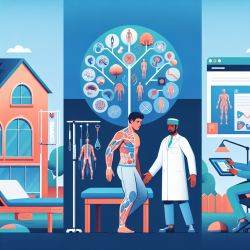Introduction
In recent years, the understanding of how environmental factors influence child development has expanded significantly. One such factor is prenatal exposure to air pollution, particularly nitrogen dioxide (NO2), which has been linked to adverse effects on child health. A groundbreaking study, "Epigenome-Wide Meta-Analysis of Methylation in Children Related to Prenatal NO2 Air Pollution Exposure," sheds light on the epigenetic mechanisms that may underlie these health outcomes.
Key Findings
The study conducted a meta-analysis of four European and North American cohorts, encompassing 1,508 participants, to investigate the association between prenatal NO2 exposure and DNA methylation patterns in newborns. The findings revealed significant associations between maternal NO2 exposure and differential DNA methylation at three specific CpG sites in mitochondria-related genes:
- LONP1 (cg12283362): Associated with protein degradation in mitochondria.
- HIBADH (cg24172570): Involved in amino acid metabolism.
- SLC25A28 (cg08973675): Functions as a mitochondrial iron transporter.
These associations suggest that prenatal NO2 exposure may induce epigenetic changes that persist into childhood, potentially affecting mitochondrial function and overall health.
Implications for Practitioners
For speech-language pathologists and other practitioners working with children, these findings underscore the importance of considering environmental factors in developmental assessments. The study highlights the potential for prenatal NO2 exposure to influence genetic expression through epigenetic modifications, which could impact various aspects of child development, including cognitive and communicative abilities.
Practitioners are encouraged to:
- Stay informed about the latest research on environmental impacts on child development.
- Consider environmental history as part of comprehensive assessments.
- Advocate for policies that reduce prenatal exposure to air pollutants.
Encouraging Further Research
While this study provides valuable insights, it also opens avenues for further research. Future studies could explore the long-term developmental outcomes associated with these epigenetic changes and investigate potential interventions to mitigate the effects of prenatal NO2 exposure.
Researchers and practitioners alike are encouraged to collaborate in multidisciplinary efforts to deepen our understanding of how environmental factors shape child development and to develop strategies for promoting optimal outcomes.
Conclusion
The "Epigenome-Wide Meta-Analysis of Methylation in Children Related to Prenatal NO2 Air Pollution Exposure" provides compelling evidence of the epigenetic impact of prenatal NO2 exposure. By integrating these findings into practice, speech-language pathologists and other child development professionals can enhance their ability to support children affected by environmental factors.
To read the original research paper, please follow this link: Epigenome-Wide Meta-Analysis of Methylation in Children Related to Prenatal NO2 Air Pollution Exposure.










